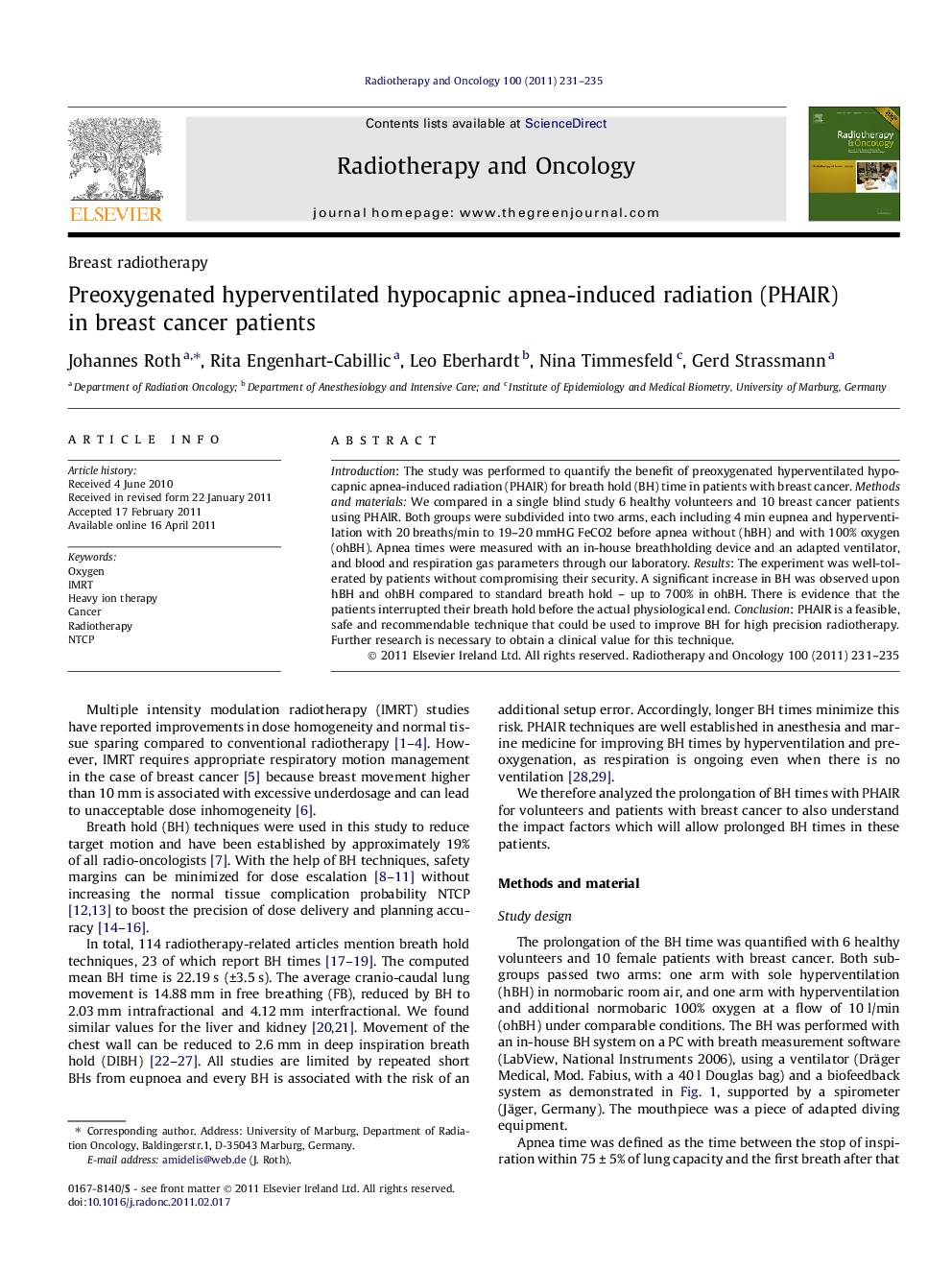| Article ID | Journal | Published Year | Pages | File Type |
|---|---|---|---|---|
| 10919626 | Radiotherapy and Oncology | 2011 | 5 Pages |
Abstract
Introduction: The study was performed to quantify the benefit of preoxygenated hyperventilated hypocapnic apnea-induced radiation (PHAIR) for breath hold (BH) time in patients with breast cancer. Methods and materials: We compared in a single blind study 6 healthy volunteers and 10 breast cancer patients using PHAIR. Both groups were subdivided into two arms, each including 4Â min eupnea and hyperventilation with 20Â breaths/min to 19-20Â mmHG FeCO2 before apnea without (hBH) and with 100% oxygen (ohBH). Apnea times were measured with an in-house breathholding device and an adapted ventilator, and blood and respiration gas parameters through our laboratory. Results: The experiment was well-tolerated by patients without compromising their security. A significant increase in BH was observed upon hBH and ohBH compared to standard breath hold - up to 700% in ohBH. There is evidence that the patients interrupted their breath hold before the actual physiological end. Conclusion: PHAIR is a feasible, safe and recommendable technique that could be used to improve BH for high precision radiotherapy. Further research is necessary to obtain a clinical value for this technique.
Related Topics
Life Sciences
Biochemistry, Genetics and Molecular Biology
Cancer Research
Authors
Johannes Roth, Rita Engenhart-Cabillic, Leo Eberhardt, Nina Timmesfeld, Gerd Strassmann,
